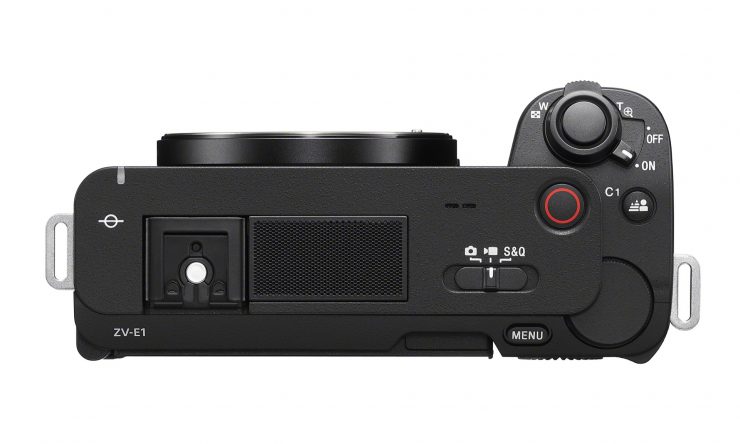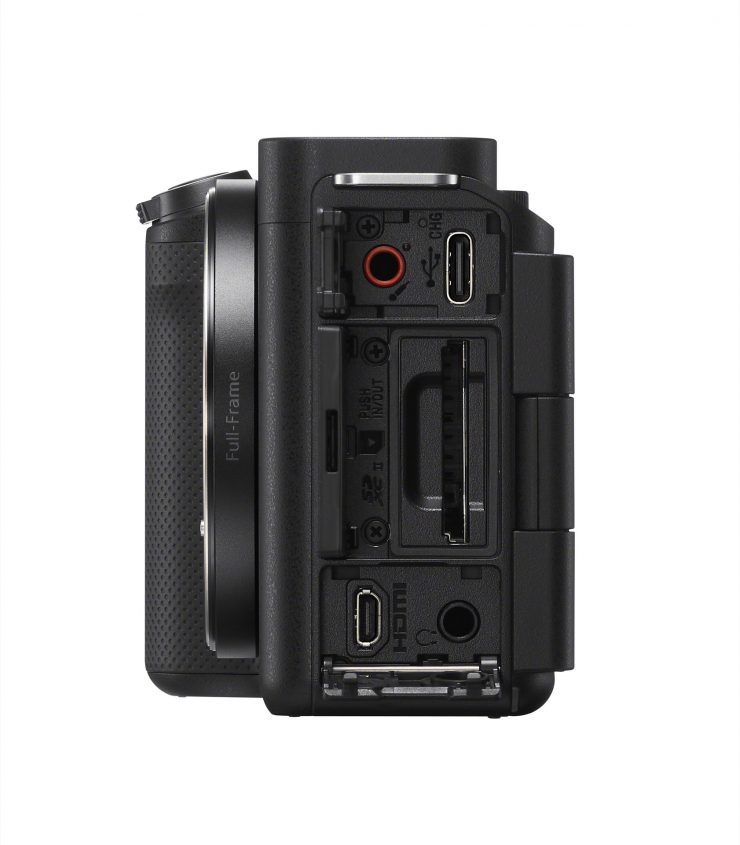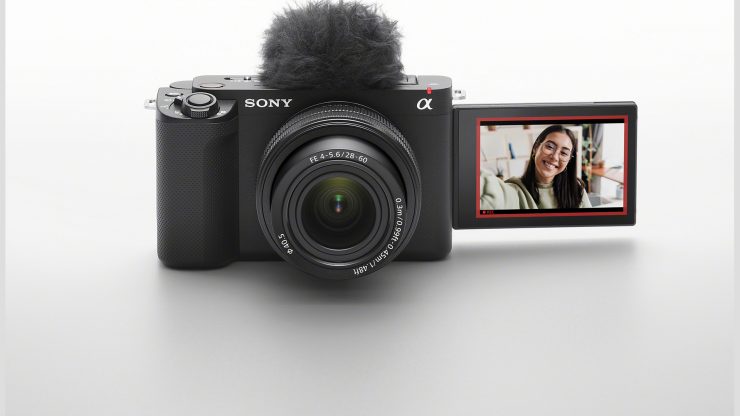
The Sony ZV-E1 is a camera that Sony states is made for vlogging. The camera uses the same 12MP full-frame back-illuminated CMOS Exmor R sensor that is in the a7s III. It also includes Sony’s latest BIONZ XR image processing engine and a dedicated AI (artificial intelligence) processing unit. The new BIONZ XR processor is also claimed to contribute significantly to improved AF speed.
Sony states that the VZ-E1 has 15+ stops of latitude which makes it possible to capture natural-looking images in a wide variety of lighting, even in extraordinarily low light situations, without losing highlight or shadow detail. Essentially you should get the exact same dynamic range and low light capabilities of an a7S III. The standard ISO range extends from 80 to 102400 for both stills and movies. The expanded range for stills is 40 to 409600, and the expanded range for movies is 80 to 409,600.
The Sony ZV-E1 features S-Cinetone, Sony’s pleasing baked-in profile that requires little post-processing.
The camera itself weighs in at 14.1 oz / 399 g (Body Only).
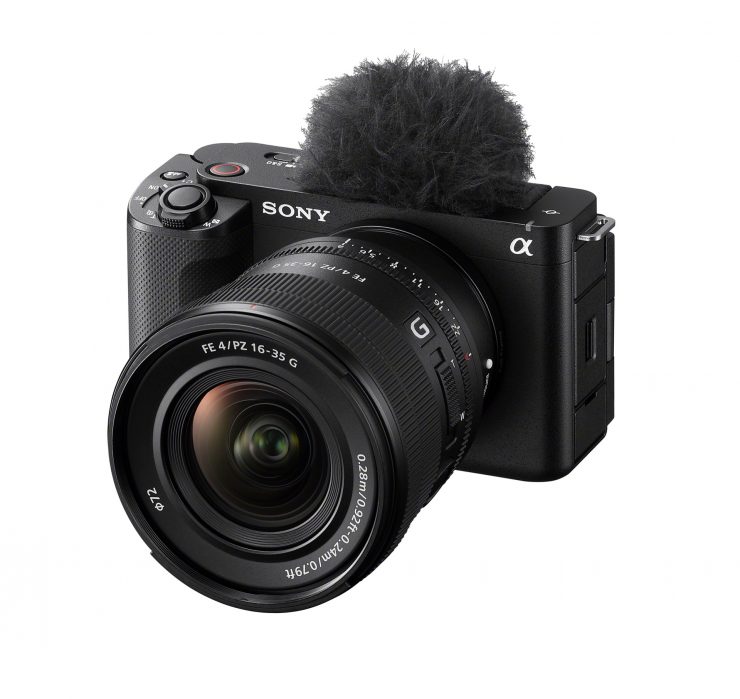
Sony VZ-E1 Key features
- Designed for Content Creators
- 12MP Full-Frame Exmor R CMOS Sensor
- UHD 4K 120p / FHD 240p / 10-Bit 4:2:2
- 5-Axis SteadyShot Image Stabilization
- 15+ Stops Dynamic Range (claimed)
- AI Auto-Framing
- Multi-Face Recognition
- Time-Lapse
- Product Showcase Setting
- S-Log3, S-Gamut3, S-Cinetone, User LUTs
- Extended ISO 80-409,600
- Internal Mic + Inputs, USB Streaming
Ten Creative Looks are included in the camera as presets, and they can also be customized. A newly added My Image Style makes it possible to shoot in the Intelligent Auto or Scene Selection mode. There are also basic icons on the touch-sensitive screen that allows users to directly adjust background bokeh, brightness, and color tone, as well as select a Creative Look.
The camera features an internal three-capsule mic, a mic jack, and you can also utilize a digital audio interface via the Multi-interface (MI) shoe. It also features a 3.5mm headphone jack. A windscreen is included to protect the internal mic.
Dedicated AI Processing Unit
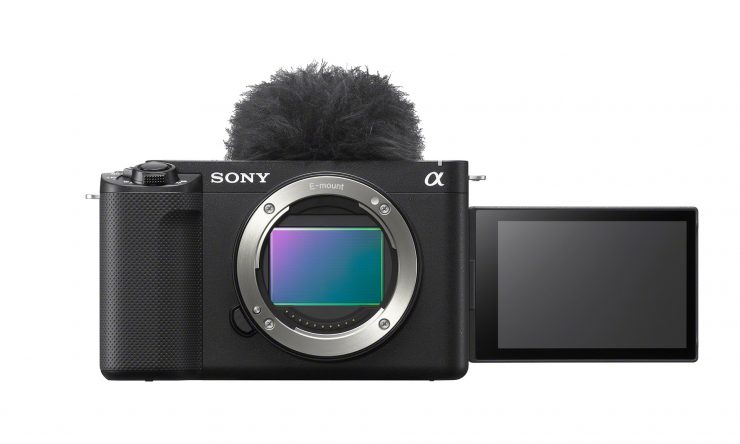
We have heard much about AI technology lately, and Sony has incorporated this into the ZV-E1. The camera features a dedicated AI (artificial intelligence) processing unit that is claimed to leverage Sony’s technologies by using AI human recognition. This includes newly developed Multiple Face Recognition, Auto Framing, Framing Stabilizer, and even Auto Microphone directivity.
Sony states the Real-time Recognition AF incorporates an innovative AI processing unit that uses subject form data to accurately recognize movement. The human poses estimation technology uses learned human forms and postures to recognize not just eyes, but body and head position with high precision, making it possible to lock onto and track a subject facing away from the camera. The AI processing unit is claimed to be able to differentiate between multiple subjects having different postures, as well as being able to recognize individual faces so that tracking reliability in challenging situations, such as when a subject’s face is tilted, in shadow, or backlit can be made easier. In addition to Humans and Animals, the AI processing unit now makes it possible to recognize Birds, Insects, Car/Trains, and Airplanes.
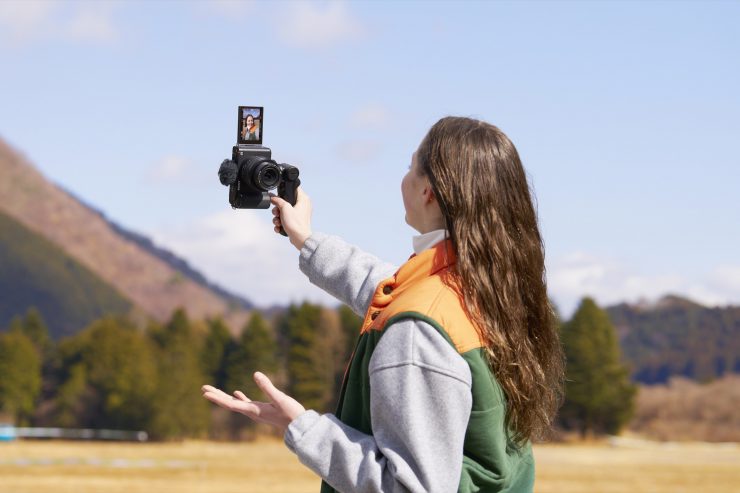
The camera also features Multiple Face Recognition which automatically adjusts bokeh and focus on multiple recognized faces when shooting group selfies or group portraits. Breathing Compensation suppresses image shifts when focusing while shooting video.
AI-based Auto Framing
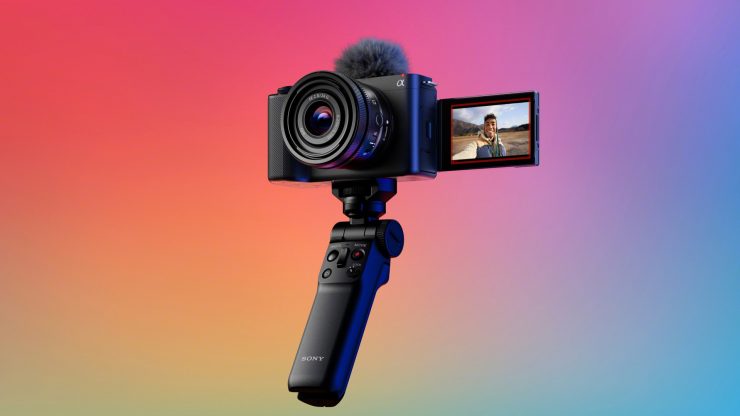
Another new feature of the ZV-E1 is the AI-based Auto Framing for video. Using AI-based subject recognition technology, the Auto Framing feature automatically crops the frame to the user’s desired level, keeping the subject in a prominent position when shooting video. Even when the camera is mounted on a tripod, for example, the framing is continually adjusted so that the recorded footage looks like the subject is being followed by a camera operator. This is similar to Apple’s webcam feature
5-axis Stabilization
A compact, 5-axis stabilization unit and gyro sensors with optimized algorithms are claimed to achieve up to 5.0-step stabilization. The camera’s in-body image stabilization is said to provide effective stabilization with a wide range of lenses, including E-mount lenses that do not include their own stabilization. Dynamic active Mode stabilization is claimed to be approximately 30% more effective than Active Mode. This makes it easier than ever to shoot smooth, stable footage while moving around. The ZV-E1 also boasts a Framing Stabilizer that uses advanced AI-based subject recognition in conjunction with the camera’s Dynamic active mode image stabilization to automatically keep the subject’s position in the frame constant.
Video Specifications
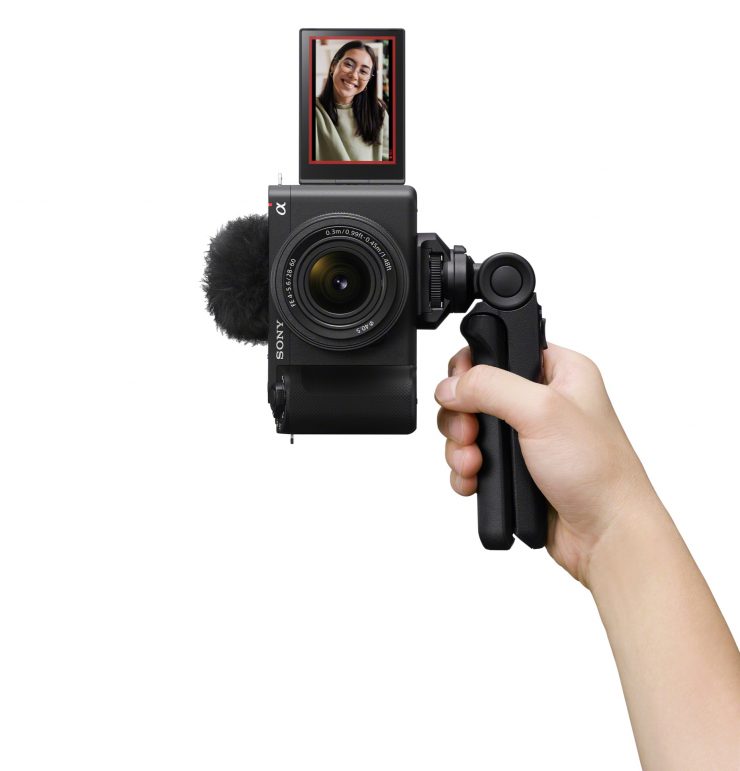
Below you can see what resolutions, frame rates, and codecs the camera can record in:
RawXAVC HS 4:2:0 10-Bit
UHD 4K (3840 x 2160) at 50/59.94 fps [45 to 150 Mb/s]
UHD 4K (3840 x 2160) at 23.98 fps [30 to 100 Mb/s]
RawXAVC HS 4:2:2 10-Bit
3840 x 2160 at 50/59.94 fps [100 to 200 Mb/s]
3840 x 2160 at 23.98 fps [50 to 100 Mb/s]
RawXAVC S 4:2:2 8-Bit
UHD 4K (3840 x 2160) at 50/59.94 fps [100 to 200 Mb/s]
UHD 4K (3840 x 2160) at 25/29.97 fps [140 Mb/s]
UHD 4K (3840 x 2160) at 23.98 fps [100 Mb/s]
RawXAVC S 8-Bit
1920 x 1080p at 100/120 fps [60 to 100 Mb/s]
1920 x 1080p at 50/59.94 fps [25 to 50 Mb/s]
1920 x 1080p at 25/29.97 fps [16 to 50 Mb/s]
1920 x 1080p at 23.98 fps [50 Mb/s]
RawXAVC S 10-Bit
1920 x 1080p at 23.98/25/29.97/50/59.94 fps [50 Mb/s]
RawXAVC S-I 10-Bit
3840 x 2160 at 59.94 fps [600 Mb/s]
3840 x 2160 at 50 fps [500 Mb/s]
3840 x 2160 at 29.97 fps [300 Mb/s]
3840 x 2160 at 25 fps [250 Mb/s]
3840 x 2160 at 23.98 fps [50 Mb/s]
1920 x 1080p at 59.94 fps [222 Mb/s]
1920 x 1080p at 50 fps [185 Mb/s]
1920 x 1080p at 29.97 fps [111 Mb/s]
1920 x 1080p at 25 fps [93 Mb/s]
1920 x 1080p at 23.98 fps [89 Mb/s]
Gamma Curve Options
S Cinetone
Sony S-Log 2
Sony S-Log 3
Audio Recording Formats
LPCM 2ch (48 kHz 16 bit)
LPCM 2ch (48 kHz 24 bit)
LPCM 4ch (48 kHz 24 bit) *[When using accessories that support 4ch output / 24 bits with the Multi Interface Shoe.]
The camera doesn’t have any recording time limitations and it records to a single slot SD/SDHC/SDXC (UHS-II) card.
Pricing
The new ZV-E1 will be available in May 2023 for an estimated retail price of $2,199.99 USD and $2,999.99 CAN. A kit variation, including the compact full-frame 28-60 mm F4.5-5.6 zoom lens, is also available for an estimated retail price of $2,499.99 USD and $3,399.99 CAN.
Thoughts
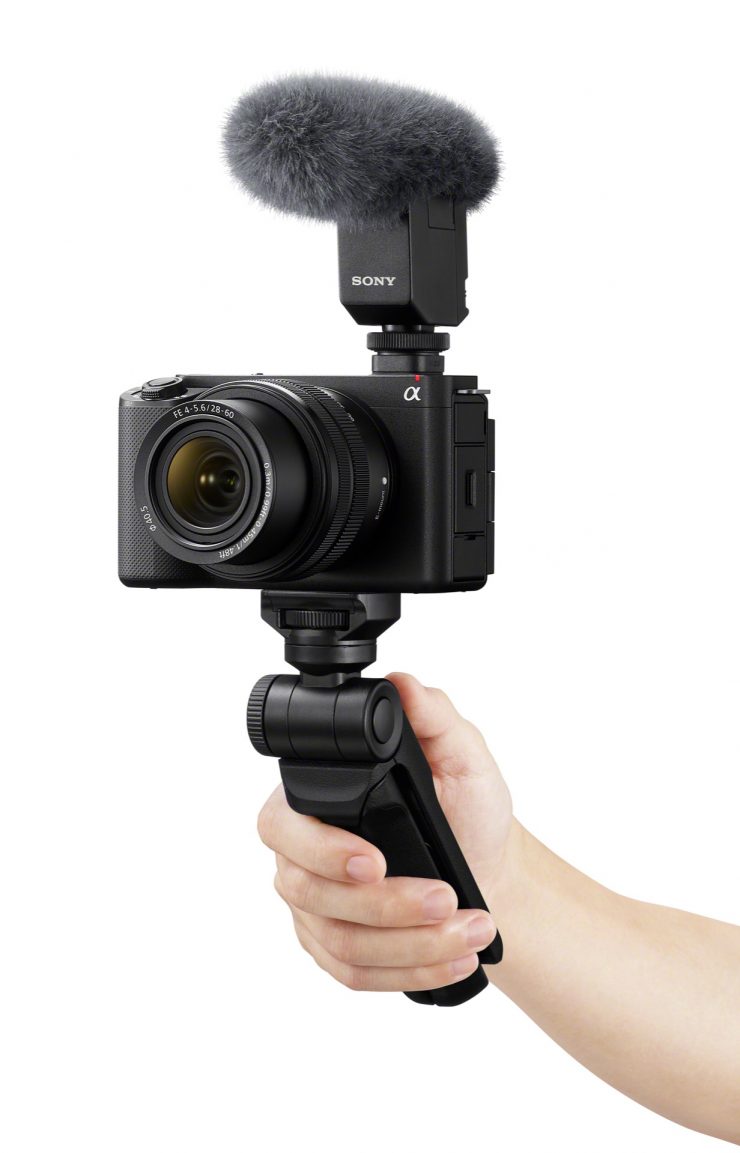
The ZV-E1 looks like an interesting camera that has arguably more powerful features than some of Sony’s more expensive mirrorless cameras. The video-centric focus is somewhat confusing as the FX3 is now a bit long in the tooth regarding technology in Sony’s full-frame compact video cameras. AI advancements are impressive, and I’m sure we will see more auto-focus and tracking improvements released in many cameras soon. While Sony states it’s a vlogging camera, it’s priced higher than a consumer camera at over $2000, but still less expensive than the FX3 at $3,899.99. Like the FX3 and FX30, there is no EVF.

